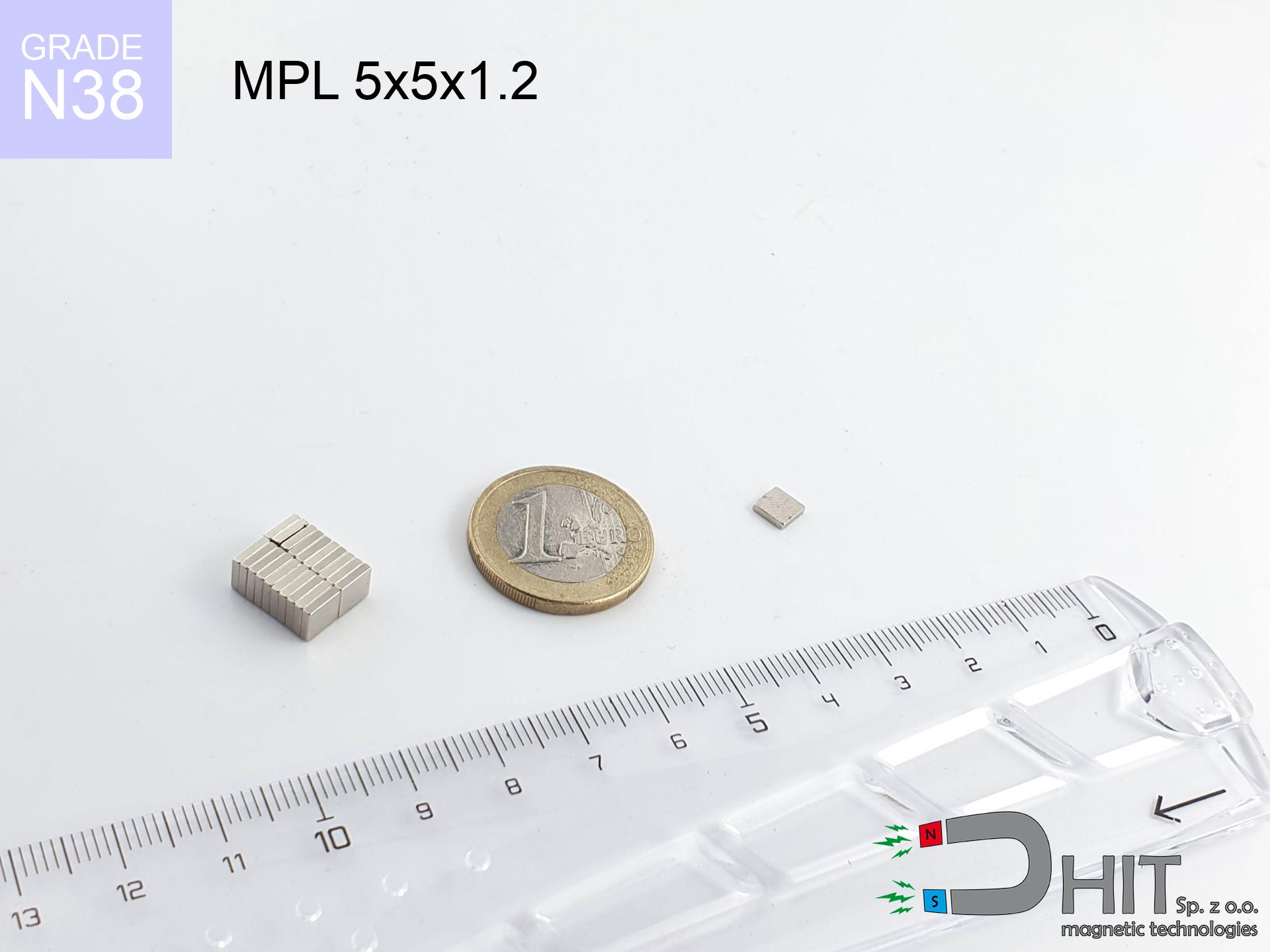AM ucho [M8] - magnetic accessories
magnetic accessories
Catalog no 080268
GTIN/EAN: 5906301812470
Weight
53 g
Load capacity
240.00 kg / 2353.60 N
4.92 ZŁ with VAT / pcs + price for transport
4.00 ZŁ net + 23% VAT / pcs
bulk discounts:
Need more?
Call us now
+48 22 499 98 98
alternatively contact us by means of
request form
the contact form page.
Weight and form of a neodymium magnet can be tested using our
magnetic calculator.
Order by 14:00 and we’ll ship today!
Technical data of the product - AM ucho [M8] - magnetic accessories
Specification / characteristics - AM ucho [M8] - magnetic accessories
| properties | values |
|---|---|
| Cat. no. | 080268 |
| GTIN/EAN | 5906301812470 |
| Production/Distribution | Dhit sp. z o.o. |
| Country of origin | Poland / China / Germany |
| Customs code | 85059029 |
| Weight | 53 g |
| Load capacity ~ ? | 240.00 kg / 2353.60 N |
| Manufacturing Tolerance | ±1 mm |
Physical properties of sintered neodymium magnets Nd2Fe14B at 20°C
| properties | values | units |
|---|---|---|
| Vickers hardness | ≥550 | Hv |
| Density | ≥7.4 | g/cm3 |
| Curie Temperature TC | 312 - 380 | °C |
| Curie Temperature TF | 593 - 716 | °F |
| Specific resistance | 150 | μΩ⋅cm |
| Bending strength | 250 | MPa |
| Compressive strength | 1000~1100 | MPa |
| Thermal expansion parallel (∥) to orientation (M) | (3-4) x 10-6 | °C-1 |
| Thermal expansion perpendicular (⊥) to orientation (M) | -(1-3) x 10-6 | °C-1 |
| Young's modulus | 1.7 x 104 | kg/mm² |
Material specification
| iron (Fe) | 64% – 68% |
| neodymium (Nd) | 29% – 32% |
| boron (B) | 1.1% – 1.2% |
| dysprosium (Dy) | 0.5% – 2.0% |
| coating (Ni-Cu-Ni) | < 0.05% |
Environmental data
| recyclability (EoL) | 100% |
| recycled raw materials | ~10% (pre-cons) |
| carbon footprint | low / zredukowany |
| waste code (EWC) | 16 02 16 |
Check out also proposals
Advantages and disadvantages of neodymium magnets.
Advantages
- They do not lose magnetism, even during approximately 10 years – the drop in power is only ~1% (based on measurements),
- Magnets effectively protect themselves against loss of magnetization caused by ambient magnetic noise,
- In other words, due to the reflective layer of gold, the element looks attractive,
- Magnets are distinguished by exceptionally strong magnetic induction on the outer layer,
- Made from properly selected components, these magnets show impressive resistance to high heat, enabling them to function (depending on their shape) at temperatures up to 230°C and above...
- Possibility of accurate shaping as well as optimizing to individual applications,
- Significant place in electronics industry – they serve a role in data components, electric motors, medical equipment, and other advanced devices.
- Thanks to their power density, small magnets offer high operating force, occupying minimum space,
Cons
- To avoid cracks under impact, we recommend using special steel housings. Such a solution secures the magnet and simultaneously improves its durability.
- When exposed to high temperature, neodymium magnets suffer a drop in strength. Often, when the temperature exceeds 80°C, their strength decreases (depending on the size and shape of the magnet). For those who need magnets for extreme conditions, we offer [AH] versions withstanding up to 230°C
- They rust in a humid environment - during use outdoors we suggest using waterproof magnets e.g. in rubber, plastic
- Due to limitations in realizing threads and complex forms in magnets, we recommend using casing - magnetic holder.
- Health risk related to microscopic parts of magnets can be dangerous, when accidentally swallowed, which gains importance in the aspect of protecting the youngest. Additionally, tiny parts of these devices can disrupt the diagnostic process medical in case of swallowing.
- High unit price – neodymium magnets cost more than other types of magnets (e.g. ferrite), which can limit application in large quantities
Lifting parameters
Optimal lifting capacity of a neodymium magnet – what it depends on?
- using a sheet made of mild steel, acting as a circuit closing element
- possessing a thickness of minimum 10 mm to ensure full flux closure
- with an ground contact surface
- without any clearance between the magnet and steel
- under vertical force direction (90-degree angle)
- in neutral thermal conditions
Lifting capacity in real conditions – factors
- Gap between surfaces – even a fraction of a millimeter of distance (caused e.g. by varnish or dirt) diminishes the magnet efficiency, often by half at just 0.5 mm.
- Loading method – catalog parameter refers to pulling vertically. When applying parallel force, the magnet exhibits significantly lower power (typically approx. 20-30% of maximum force).
- Steel thickness – too thin sheet does not close the flux, causing part of the flux to be escaped to the other side.
- Material type – the best choice is high-permeability steel. Stainless steels may generate lower lifting capacity.
- Smoothness – full contact is possible only on smooth steel. Rough texture reduce the real contact area, reducing force.
- Thermal environment – heating the magnet causes a temporary drop of force. It is worth remembering the thermal limit for a given model.
Lifting capacity was assessed with the use of a polished steel plate of suitable thickness (min. 20 mm), under vertically applied force, in contrast under attempts to slide the magnet the holding force is lower. Moreover, even a slight gap between the magnet and the plate reduces the lifting capacity.
Warnings
GPS and phone interference
A strong magnetic field interferes with the operation of compasses in smartphones and GPS navigation. Maintain magnets near a smartphone to prevent breaking the sensors.
Fragile material
Despite metallic appearance, the material is delicate and not impact-resistant. Do not hit, as the magnet may shatter into sharp, dangerous pieces.
Skin irritation risks
Certain individuals experience a hypersensitivity to Ni, which is the standard coating for NdFeB magnets. Frequent touching might lead to a rash. We suggest wear safety gloves.
Fire warning
Machining of neodymium magnets carries a risk of fire risk. Neodymium dust oxidizes rapidly with oxygen and is difficult to extinguish.
Pinching danger
Big blocks can crush fingers instantly. Under no circumstances put your hand betwixt two attracting surfaces.
Implant safety
Medical warning: Neodymium magnets can turn off heart devices and defibrillators. Stay away if you have medical devices.
This is not a toy
These products are not toys. Accidental ingestion of several magnets may result in them attracting across intestines, which poses a severe health hazard and requires urgent medical intervention.
Permanent damage
Do not overheat. NdFeB magnets are sensitive to temperature. If you require resistance above 80°C, look for special high-temperature series (H, SH, UH).
Electronic hazard
Avoid bringing magnets close to a purse, laptop, or TV. The magnetic field can irreversibly ruin these devices and wipe information from cards.
Immense force
Before starting, read the rules. Uncontrolled attraction can break the magnet or hurt your hand. Be predictive.

![Magnetic accessories AM ucho [M8] Magnetic accessories AM ucho [M8]](https://cdn3.dhit.pl/graphics/banners/magnet.webp)
![AM ucho [M8] - magnetic accessories](https://cdn3.dhit.pl/graphics/products/am-ucho-m8-lib.jpg)




